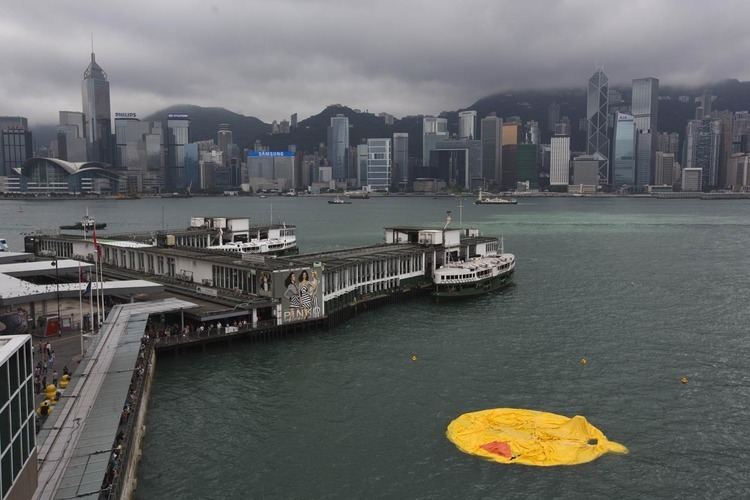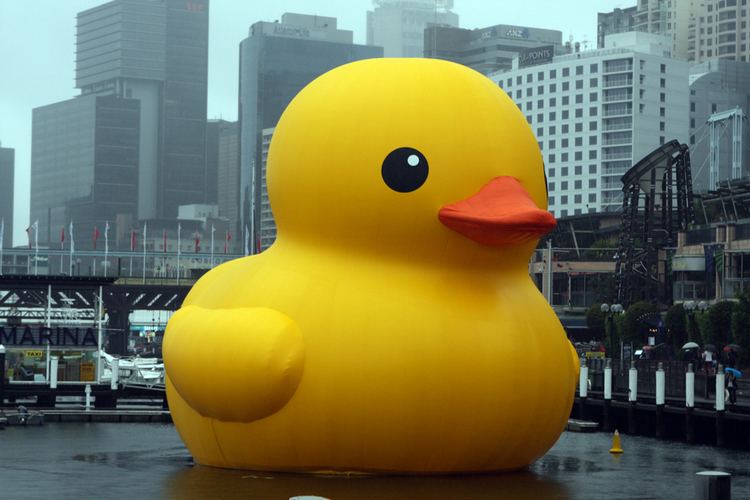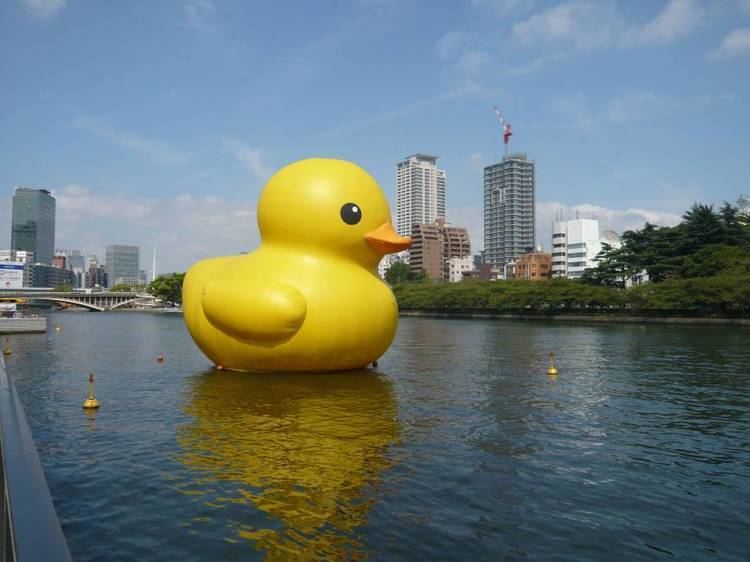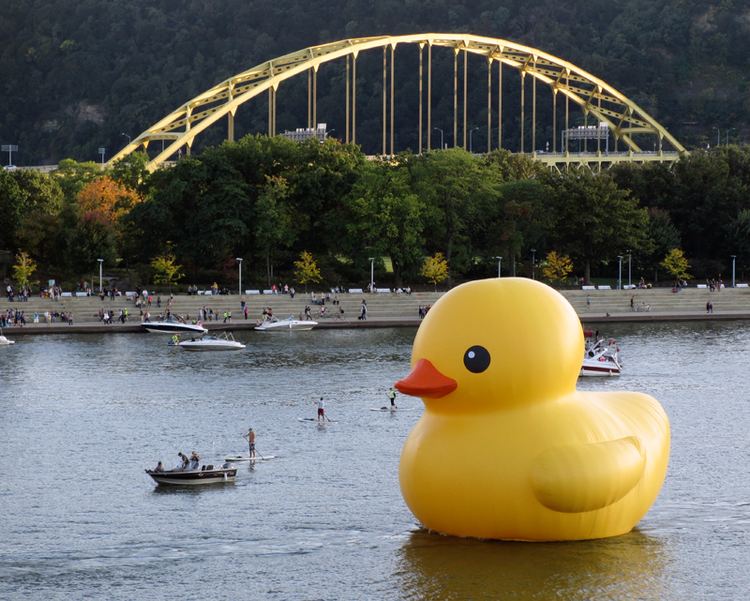Media Polyvinyl chloride | ||
 | ||
Rubber Duck refers to any of several giant floating sculptures designed by Dutch artist Florentijn Hofman. These were built in various sizes, ranging from the prototype, which measured 1 inch, to the one created in 2007 that is the largest rubber duck in the world.
Contents

Artist

The creator and designer of the Rubber Duck sculpture is Florentijn Hofman. He is a Dutch public artist who is actively working throughout the whole world. He was born in the Netherlands on April 16, 1977. He finished secondary school in Emmen and went to an art school that is located in Kampen. He mastered in art at Berlin-Weissensee, Berlin. He mostly worked on reproducing objects that we can usually see around us, in a huge size. A characteristic of Florentijn Hofman's work is that he makes objects with things that we see or use often, including laminate flooring and flip-flops. With these sculptures, he wants to make people's lives happier, and become unified. The purpose of his art is to promote the message of healing.
Design

The size of the rubber duck is varied. His largest rubber duck, in Saint Nazaire, was measured, width, length, height of 26x20x32m. The rubber duck in Beijing was 14x15x18m, and the rubber duck in Seokchon lake was 16.5x19.8x16.5m with a weight of 1000 kg. The rubber duck was constructed with more than 200 pieces of PVC. All the pieces of PVC are connected by hand with sewing machines.

In order to make the durability of the rubber duck stronger, they added another piece on top of one layer. On the rubber duck, there is an opening at the back of the body so that architects and staff can perform a body check of the rubber duck. In addition, there is an electric propeller fan in its body so that it can be inflated at any time, in either good or bad weather. The electric propeller fan also keeps the air circulating inside of the rubber duck, so that the air always keeps the shape of the rubber duck sculpture.

The loops that are in the pontoon edges of the rubber duck are connected to the fence of the lake by 16 ropes. These 16 ropes can hold the rubber duck still without it floating away by the waves of the lake water.

On the bottom of the rubber duck, there is a waterproof cable. The waterproof cable gets the energy from a power distribution board near the lake to make the electric propeller fan work.
Display
Since 2007, the ducks have been on display in Amsterdam, Baku, Lommel (Belgium), Osaka, Sydney Harbour, Sao Paulo and Hong Kong. It was on display in Pittsburgh as its first US destination, from 27 September 2013 through 20 October 2013. Over 1,000,000 people are reported to have visited the duck in Pittsburgh. Its second United States appearance was in Norfolk, Virginia from 17–26 May 2014, floating in The Hague inlet in front of the Chrysler Museum of Art.
In October 2014, The Lotte group of South Korea asked for the giant rubber duck in order to celebrate the opening of the new Lotte World Mall, the country's largest shopping mall that also has a super tall skyscraper, Lotte World Tower, under construction. The tower is located between the Han River and Seokchon Lake where the giant rubber duck is placed. However, the duck deflated during the exhibition.
In 2009, while it was on display in Belgium, vandals stabbed Rubber Duck 42 times.
Here are the dimensions and location of each duck in order of date:
The duck on display in Hong Kong, from 1 May to 9 June 2013, deflated on 15 May after losing air. It was re-inflated and was again on exhibition on 20 May. It was damaged and deflated again in Taiwan on 2 November after an earthquake, before bursting at Keelung, Taiwan, on 31 December 2013. The duck was reported as having been swept away in recent floods in China.
Big Yellow Duck
On 4 June 2013, Sina Weibo, China's most popular microblog, had blocked the terms "Today", "Tonight", "June 4", and "Big Yellow Duck". If these were searched, a message would appear stating that according to relevant laws, statutes and policies, the results of the search could not be shown. The censorship occurred because a photoshopped version of Tank Man, which swapped all tanks with this sculpture, had been circulating around Twitter.
Origin
In 1992, a Chinese cargo ship travelling from China to Seattle lost some 350 containers overboard during a storm. Among the lost containers were a range of bath toys, including beavers, turtles, frogs and ducks. It is claimed that some 28,800 ducks were released into the ocean and they have been travelling around the world for at least a decade. While Hofman is aware of this news item, it isn't clear if it formed part of the origin story for his duck sculpture or not.
In an interview in Chengdu, Hofman stated that his initial inspiration for Rubber Duck came when he was visiting a museum in 2001. He then searched to find what he considered the perfect toy duck and settled on a design by a Hong Kong company, Tolo Toys: "And I went to the shops, for weeks, to find the most perfect rubber duck, and that was [it]. It's not new. For a hundred years there have been rubber ducks, but I found the best shape and that was a Tolo rubber duck." said Hofman in July 2013.
